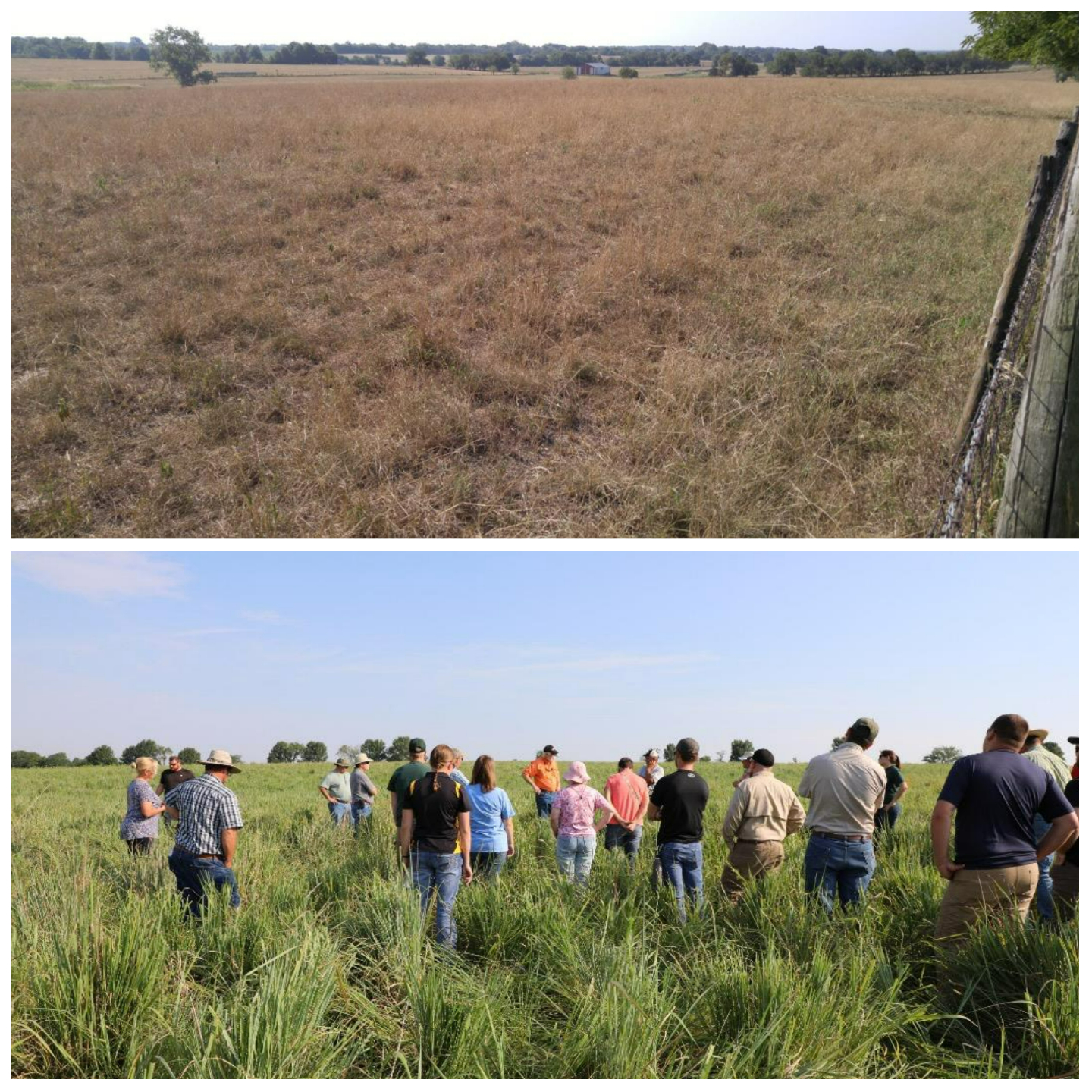Winter is time to plan to beat summer slump

KIRKSVILLE, Mo. — Winter is the time for livestock producers to prepare pastures for drought, says University of Missouri Extension state forage specialist Harley Naumann.
Drought is now the rule rather than the exception in Missouri, Naumann says. According to the U.S. Drought Monitor, somewhere in the state experienced drought every year but one since 2000.
Naumann urges producers to add warm-season forages to rotational grazing systems. They grow during the warm, dry conditions of midsummer known as the “summer slump,” when cool-season grasses become less productive.
In addition to protecting against inevitable drought, warm-season forages provide high nutritive value and extend the growing season, he says.
Native warm-season grasses excelled in a 2007 University of Tennessee study of drought and forage. They tolerated drought exceptionally well and produced up to 8 tons of dry matter per acre, according to the study.
Deep-rooted warm-season grasses provided similar results during a 2018 study of pastures in Linn County, Missouri. While cool-season grasses browned, warm-season grasses flourished. Southwest Missouri forage producers also saw this in the 2022 drought. Warm-season grass growers were “belly deep in green grass” while cool-season grasses stopped growing, Naumann says.
Warm-season grasses offer another benefit: They cost less to fertilize. Warm-season grasses need 60 pounds of nitrogen per acre to produce 4-5 tons of forage, while cool-season grasses require 180 pounds of nitrogen for similar tonnage.
Other bonuses include better animal performance and an extended grazing season. Grazing warm-season forages allows the cool-season grasses to rest and stockpile for winter grazing. According to a study by MU Extension agribusiness specialist Wes Tucker, cool-season grass stockpiling costs 86 cents per day to feed a cow, compared to $1.76 to feed hay.
Native warm-season grasses also reduce risk of fescue toxicosis, a disease that reduces calving rates, weaning weights and average daily growth.
Johnson grass, a non-native, drought-resilient warm-season grass, establishes and spreads well in most Missouri soils. Producers often have a “love-hate relationship” with it because of its competitive and sometimes toxic nature, says Naumann.
Naumann recommends testing forages containing Johnson grass for nitrates and prussic acid, which accumulate during dry periods. Cyanide-producing prussic acid appears in immature plants after early frost. Producers should avoid grazing pastures with Johnson grass for two weeks after a killing frost. Nitrates remain in cured hay, while prussic acid does not.
Tests at MU’s Southwest Research Center in Mount Vernon from 1996 to 1998 showed advantages of other native warm-season grasses, Naumann says. Bermuda grass varieties Ozark, Midland 99 and Tifton 44 tolerated drought well and produced exceptional tonnage. Annuals such as Sudan grass, pearl millet and crabgrass also perform well and provide a long grazing period.
Naumann noted that crabgrass, commonly considered a weed, works well as a warm-season annual and allows grazing as early as 40 days post-emergence. It offers 1.6 pounds average daily gain (ADG) compared to tall fescue’s 0.9 pounds ADG.
Annual lespedeza, a legume, tolerates poor soils and low-phosphorus soils and fixes nitrogen. It mixes well with cool-season grasses but requires careful management to encourage persistence. Korean lespedeza can be frost seeded in February or later.
Sunn hemp is a vigorous grower that tolerates drought and low-fertility soils extremely well and increases carrying capacity, Naumann says. It offers 20%-25% crude protein and is 90% digestible. It increased cattle gain per acre by 17%, according to Naumann’s research.
Naumann’s six-year research at the MU Forage Systems Research Center at Linneus shows that sunn hemp provides a boost during summer slump. It grows as much as an inch per day to heights of 9 feet.
Even if drought does not occur this year, producers will still enjoy the benefits of warm-season annuals such as high nutritive value, a longer grazing period and cost savings, Naumann says.
Naumann recommends converting 30% or less of pastures to perennial warm-season grasses. The process puts that portion of pastureland out of production for one season, but there are many advantages, he says.
For more information, the MU Extension guide “Warm-Season Annual Forage Crops” is available for free download at extension.missouri.edu/g4661. More information is available from the Alliance for Grassland Renewal at www.grasslandrenewal.org. The alliance includes partners from university, government, industry and nonprofit groups.
More resources:
MU Extension drought resources: mizzou.us/DroughtResources
MU Integrated Pest Management drought resources: ipm.missouri.edu/drought
Miss Clipping Out Stories to Save for Later?
Click the Purchase Story button below to order a print of this story. We will print it for you on matte photo paper to keep forever.

